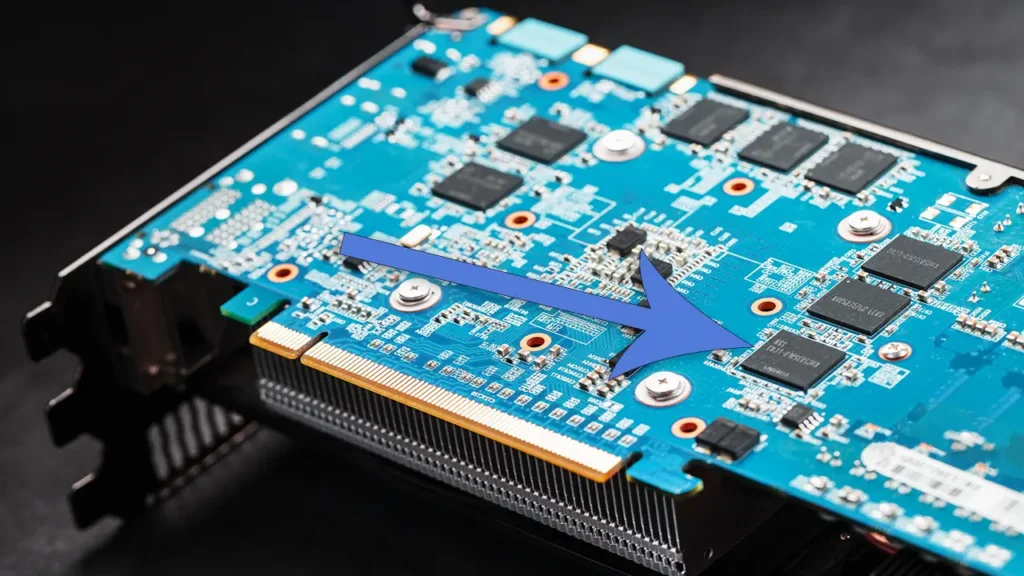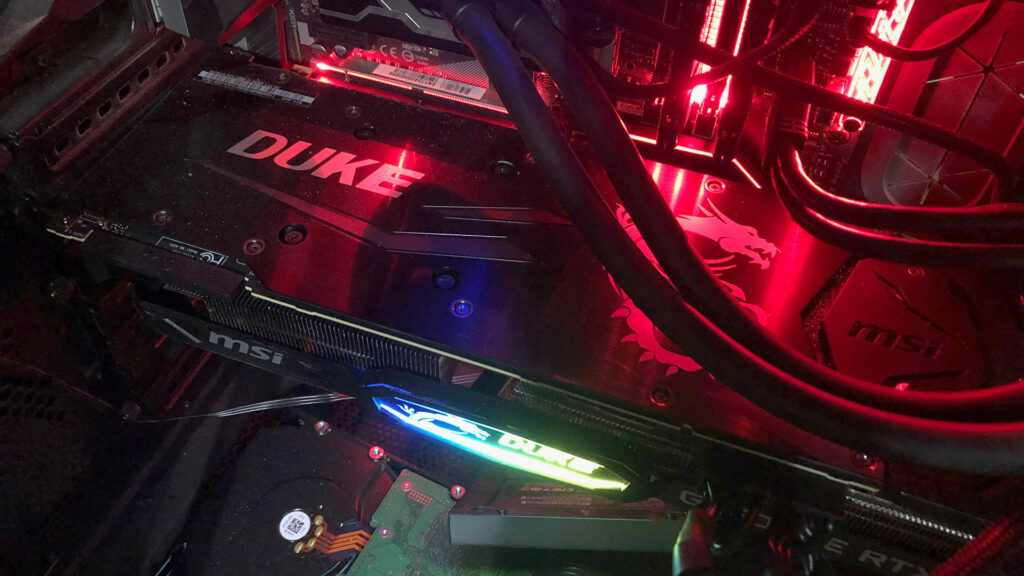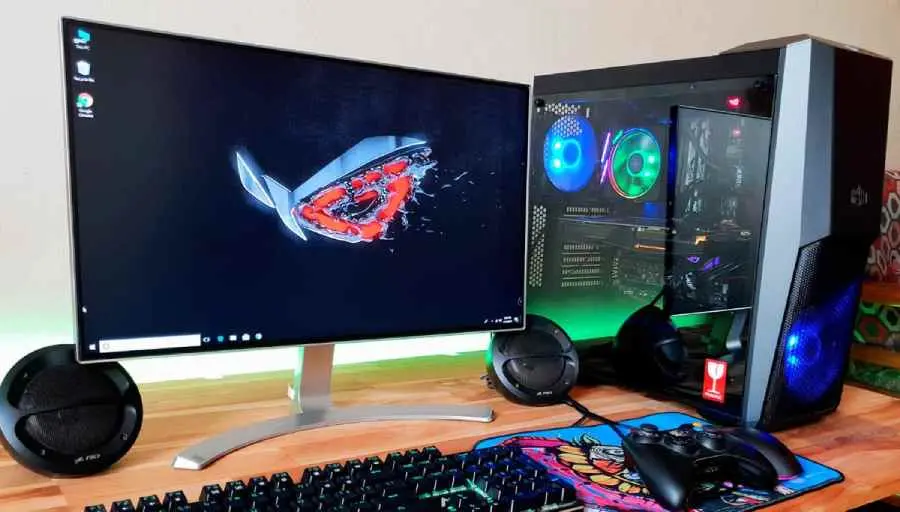Why Is My GPU Underperforming? || Boosting Gaming Performance
Have you ever been disappointed by your graphics card’s poor performance? You buy a powerful GPU for smooth gaming and speedy graphics but with slow and sluggish apps. Don’t worry; many face this issue.
Software problems, virus attacks, malware attacks, outdated drivers, Incompatibility with hardware components, storage issues, and overheating issues are the reasons behind your GPU underperforming.
This article explains why powerful graphics cards can sometimes perform poorly and offers practical tips to improve their performance for a better gaming experience.
Reasons Behind Your Gpu Is Underperforming:

1. Software Problems:
Sometimes, your computer’s graphics card, called a GPU, might need to work better. This can happen because of issues with the programs that manage how the GPU works. Think of these programs as traffic directors for your GPU. If these programs have problems or mistakes, your GPU won’t do its job correctly.
2. Malware And Viruses:
Sneaky programs can sneak into your computer and cause trouble. They’re like uninvited guests at a party, taking up space and making a mess.
These programs don’t just slow down your computer; they can specifically mess with your graphics card, which is a big problem for gamers and people who use their computers for graphics-heavy tasks.
One kind of malware that messes with graphics cards is called crypto mining bots. These sneaky programs secretly use your graphics card to make money by mining cryptocurrencies without your permission.
This makes your graphics card work hard for something you didn’t even agree to. Some harmful programs even intentionally mess with your graphics card by changing its settings or blocking essential things it needs to work correctly.
3. Outdated Drivers:
Developers often design their games and applications to take advantage of the latest advancements in graphics technology.
You need to update your GPU drivers to avoid missing out on these enhancements, which can significantly impact visual quality and overall performance.
Additionally, failing to keep up with driver updates may limit the lifespan of your GPU, as it won’t be able to handle new challenges efficiently.
4. Incompatibility With Hardware Components:
Your computer system is like a well-oiled machine, where each part needs to work seamlessly together. A mismatch between your GPU and other components, such as the motherboard or power supply, can severely impact performance.
5. Storage Issue:
There needs to be more adequate storage to ensure the performance of a GPU, as it struggles to access necessary data quickly enough. This bottleneck effect can result in slower rendering times, reduced frame rates, and poor gaming or editing experiences.
6. Overheating Issue:

Is your GPU underperforming? Are you experiencing frustrating lags and glitches while gaming or running resource-intensive applications? One possible culprit may be an overheating issue.
It’s no secret that graphics processing units (GPUs) generate a substantial amount of heat while in use, and when they overheat, their performance can suffer significantly.
This is a problem that many avid gamers and professionals face, but fortunately, there are solutions to mitigate the effects of GPU overheating.
7. Less Power Supply:
When a GPU doesn’t receive enough power, it struggles to operate at its intended capacity. This can reduce clock speeds, directly affecting games’ frames per second (FPS).
Insufficient power can cause instability and crashes during demanding tasks or heavy gaming sessions. So, if you’re noticing that your competition isn’t performing as smoothly as expected, don’t blame the graphics card; instead, double-check that your power supply unit supplies adequate power.
8. Overclocking:
Overclocking is like making your GPU go faster than how it usually works. It’s like getting extra speed from your car that the factory didn’t give you.
You might wonder, why do this? The main reason is that it lets you change the settings to fit precisely what you want instead of using the regular settings that come with the GPU when you buy it.
Possible Solutions To Boost Your GPU Performance:
1. Uninstall Unnecessary Software:
Unlock the full potential of your GPU by examining the software clogging your system. It’s time to say goodbye to those unnecessary programs secretly sapping your valuable resources.
Removing these applications will free up precious storage space and provide your GPU with the area required to operate optimally.
2. Check For Malware And Virus Attack:
To get over malware and virus attacks:
- Consider purchasing trustworthy antivirus software.
- Regularly scan your system for potential threats.
- Keep antivirus software up to date with the latest virus definitions.
- Exercise caution when dealing with email attachments that seem suspicious.
- Avoid visiting potentially harmful websites.
3. Update Drivers:
It’s easier than you might think! Most manufacturers provide user-friendly software that automatically detects and updates the drivers for you.
Take advantage of these tools to stay up-to-date with the latest driver releases effortlessly. Additionally, visiting the manufacturer’s website directly gives you access to manual driver downloads if you prefer a more hands-on approach.
4. Check For Hardware Components Compatibility:

Check for compatibility specifications between your chosen GPU and the rest of your system. Look for requirements like power supply wattage recommendations and PCIe slot availability. Ensuring all components work harmoniously together will optimize performance and avoid potential issues such as bottlenecking or instability.
5. Resolve Storage Problems:
It’s time to give your GPU a boost. One way to do this is by resolving storage problems that might hinder its performance. Consider upgrading to an SSD (Solid State Drive) instead of a traditional hard drive.
SSDs are faster, more durable, and provide quicker access to data, enabling your GPU to render graphics faster and more efficiently. This can result in smoother gameplay and improved overall performance.
6. Upgrade Cooling System:
Easy ways to upgrade your cooling system are given below.
- Consider upgrading to liquid cooling for better temperature control
- Liquid cooling setups often include customizable fan speed options
- Monitor temperatures and have complete control over cooling performance
7. Look For Overclocking:
To effectively control overclocking, consider using software tools specifically designed for this purpose. These tools provide a user-friendly interface with options for adjusting core clock speed, memory frequency, voltage settings, etc. By monitoring the temperature of your GPU during these adjustments, you’ll ensure that it remains within safe limits.
8. Provide Proper Power Supply:
To get the most out of your GPU, follow these simple steps:
- Check Your GPU’s Power Requirements: Make sure your graphics card is connected to a power supply unit (PSU) that matches its needs. This avoids problems and helps your GPU work at its best.
- Consider A Good-Quality PSU: A high-quality PSU has extra advantages. It improves your system’s efficiency, saving energy and reducing heat. Some even have handy features like modular cables to keep your PC tidy and calm.
Conclusion:
In conclusion, if your GPU is underperforming, there are several potential reasons to consider, like software problems, malware and viruses issues.
Additionally, outdated drivers can hinder the performance of your GPU, so routinely updating them is essential. Incompatibility with hardware components may also be a culprit, so double-checking compatibility before upgrading is recommended.
Furthermore, storage and overheating problems can negatively affect GPU performance; ensuring sufficient storage space and proper cooling measures is vital. Lastly, a lack of power supply may also contribute to underperformance; ensure your system has an adequate power supply to support your GPU’s needs.
Frequently Asked Questions:
1. What Should I Do If My GPU Underperforms in Specific Games Or Applications But Works Fine In Others?
If your GPU underperforms in specific games or applications, it could be due to software optimization issues or conflicts. Check for game-specific updates or patches and ensure your GPU drivers are current. Research online forums or community discussions for solutions related to the specific software.
2. What’s The Ideal Temperature Range For A GPU?
The ideal temperature range for a GPU is typically between 60°C and 80°C under load, although specific GPUs may have different recommended fields. Refer to your GPU manufacturer’s guidelines for precise information.
3. How Often Should I Update My GPU Drivers?
It’s advisable to check for driver updates monthly. However, you should specifically update your GPU drivers whenever a new game or application you want to use recommends or requires a driver update.
4. Can I Use Third-Party Tools To Monitor My GPU’s Temperature And Performance?
Yes, many third-party tools are available for monitoring GPU temperature, performance, and other metrics. Popular options include MSI Afterburner, GPU-Z, and HWMonitor. These tools can help you monitor your GPU’s health and performance.
5. Can A Bios Update Improve GPU performance?
Occasionally, a BIOS update for your motherboard may include optimizations that can indirectly improve GPU performance by enhancing system stability and compatibility. However, BIOS updates should be cautiously approached and only performed if necessary.